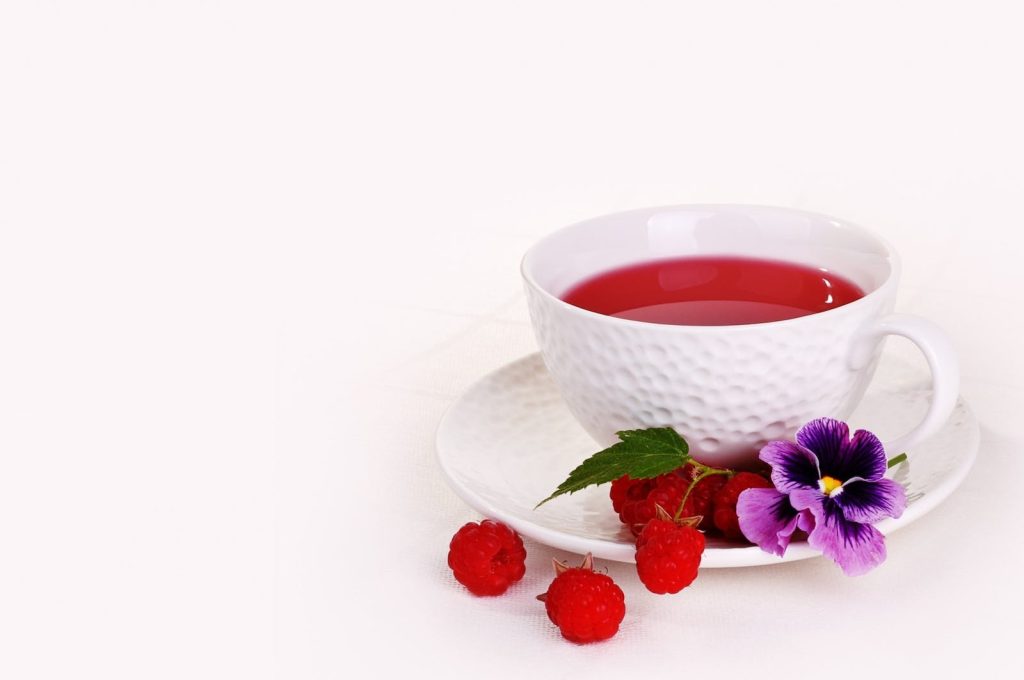Curiosity Brews – Unraveling the Health Secrets of Boba in Bubble Tea

Sip into Curiosity – What’s Really in Your Bubble Tea Photo by Jason Leung
I stood in line, surrounded by the tempting aroma of freshly brewed tea and the anticipation of a delightful treat.
It was my first encounter with boba, those chewy tapioca pearls that transform a simple beverage into a sensation.
Little did I know that this would begin a journey into the surprising world of boba’s health benefits.
In the next few minutes, we’ll unravel the nutritional value hidden within these tiny pearls and discover how indulging in bubble tea can bring unexpected advantages to your well-being.
So, join me as we delve into the secrets of boba, sip by sip, and unveil a healthier you.
Bubble Up Your Health Knowledge – The Surprising Nutritional Facts of Boba
If you’re a fan of boba tea, you’re in luck: this popular Taiwanese beverage has a range of potential health benefits.
Boba tea, also known as bubble tea, is made by blending tea with milk, fruit, and chewy tapioca balls, creating a sweet and satisfying drink that’s enjoyed around the world.
While boba tea is not a substitute for a healthy diet, it may offer some benefits when consumed in moderation.
One of the potential health benefits of boba tea is its hydration properties.
Boba tea is mostly made up of water, which is essential for keeping your body hydrated and healthy.
Drinking boba tea can be a great way to stay hydrated during the day, especially if you find it difficult to drink enough water on its own.
Another potential health benefit of boba tea is its antioxidant properties.
Tea, which is a key ingredient in boba tea, contains antioxidants that help to protect your cells from damage caused by free radicals.
Additionally, some studies have shown that tea may help to reduce the risk of chronic diseases such as heart disease and cancer.
While more research is needed to confirm these benefits, drinking boba tea may be a tasty way to add more antioxidants to your diet.
Origins and Popularity
Taiwanese Drink
Boba tea, also known as bubble tea, originated in Taiwan in the 1980s.
The drink is a combination of tea, milk, and chewy tapioca balls, which are known as “boba” or “pearls.” The drink was first created in the city of Tainan, Taiwan, and quickly became popular throughout the country.
Global Spread
Boba tea’s popularity has spread globally since its creation in Taiwan.
The drink is now enjoyed in many countries, including the United States. In the U.S., bubble tea shops can be found in major cities across the country.
Boba tea has become a favorite among many people due to its unique taste and texture.
The global popularity of boba tea has led to many variations of the drink.
Some shops offer different types of tea or milk, while others add different flavors to the tapioca balls. Boba tea has become a staple in Asian cuisine and has gained a following in the U.S. due to its unique taste and texture.
Overall, boba tea’s popularity has grown since its creation in Taiwan in the 1980s. The drink has become a favorite among many people worldwide and has led to many variations of the original recipe.
Nutritional Profile
Boba, also known as bubble tea, is a popular Taiwanese drink that consists of tea, milk, and tapioca pearls. While it is a tasty treat, you may be wondering about its nutritional profile. Here’s what you need to know:
Caloric Content
Boba drinks can vary in caloric content depending on the type of tea, milk, and sweeteners used.
According to Verywell Fit, traditional tapioca boba contains 63 calories per ounce with 15 grams of carbs and plenty of added preservatives and artificial colors.
However, some boba drinks can contain up to 500 calories per serving due to added sugar and high-fat milk.
Macronutrients
Boba drinks are typically high in carbohydrates due to the tapioca pearls and added sweeteners.
However, they are generally low in protein and fiber. According to Healthline, a typical boba drink contains 7 grams of fat, most of which comes from milk powder and non-dairy creamer.
Vitamins and Minerals
While boba drinks are not a significant source of vitamins and minerals, they do contain some calcium, iron, and folate.
According to Verywell Fit, traditional tapioca boba contains 15.2mg of calcium and 1.2mg of iron per ounce. Folate is also present in small amounts.
Sodium and Potassium
Boba drinks are generally low in sodium, with traditional tapioca boba containing only 0.8mg per ounce. However, they are not a significant source of potassium.
Overall, boba drinks can be a tasty treat, but they should be consumed in moderation due to their high sugar and calorie content.
If you’re looking for a healthier option, consider choosing a tea without added milk or sweeteners and opting for fruit or herbal teas instead.
Health Benefits
If you are a fan of boba tea, you will be happy to know that it offers several health benefits. Here are some of the health benefits of boba tea:
Antioxidant Properties
Boba tea contains antioxidants that help protect your cells from damage caused by free radicals. According to Organic Facts, bubble tea can relieve oxidative stress and prevent chronic diseases.
Bone Health
Boba tea is a good source of calcium, which is essential for strong bones. According to WebMD, consuming boba tea can help improve your bone health.
Heart Health
Boba tea can help improve your heart health by lowering your blood pressure and reducing your risk of cardiovascular disease.
According to Pangbenta, the flavonoids in boba tea can help lower your blood pressure and reduce your risk of heart disease.
Weight Management
Boba tea can help with weight management when consumed in moderation.
According to Verywell Fit, boba tea contains fewer calories than other sweetened beverages. Additionally, the fiber in the tapioca pearls can help keep you feeling full for longer, reducing your overall calorie intake.
Overall, boba tea can offer some health benefits when consumed in moderation.
However, it is important to note that many boba tea drinks contain high levels of sugar, which can lead to obesity and other health problems.
So, it is important to consume boba tea in moderation and choose healthier options whenever possible.
Possible Health Concerns
While boba can provide some health benefits, there are also some possible health concerns that you should be aware of. In this section, we will discuss some of the possible health concerns associated with boba.
Sugar Content and Diabetes
Boba tea is known for its high sugar content. The sugar level in boba tea can vary depending on the type of tea, the amount of sugar added, and the size of the drink.
A 16-ounce serving of boba tea can contain up to 50 grams of sugar, which is more than the recommended daily intake of sugar for adults.
Consuming too much sugar can lead to health problems such as obesity and diabetes.
If you have diabetes or are at risk of developing diabetes, you should be careful when consuming boba tea. You may want to consider choosing a sugar-free option or limiting your intake of boba tea.
Allergies and Sensitivities
Some people may have allergies or sensitivities to the ingredients in boba tea.
The most common allergy associated with boba tea is a latex allergy. Tapioca pearls, which are used in boba tea, are made from cassava root, which contains a natural latex.
If you have a latex allergy, you should avoid boba tea or choose a boba tea that does not contain tapioca pearls.
In addition, some people may be sensitive to the caffeine in boba tea. If you are sensitive to caffeine, you should be cautious when consuming boba tea and choose a tea that has a lower caffeine content.
Overall, while boba tea can be a tasty and refreshing drink, it is important to be aware of the possible health concerns associated with it.
By being mindful of your sugar intake and any allergies or sensitivities you may have, you can enjoy boba tea in moderation as part of a healthy lifestyle.
Ingredients and Variations

A Fascinating journey to understand Boba’s role in the Cutritional value of Bubble Tea. Photo by Jane Doan
If you’re new to boba, you might be wondering what goes into making this delicious drink. Here are some of the common ingredients and variations you can expect to find:
Tea Base
The tea base is the foundation of boba, and it can be made from a variety of teas, including green tea and black tea.
Green tea is a popular choice for those who want a healthier option, as it is packed with antioxidants.
Black tea, on the other hand, is a great choice for those who want a stronger, bolder flavor.
Toppings Selection
Boba is known for its unique toppings, which can include everything from fruit jelly to grass jelly to aloe vera.
Toppings can add a burst of flavor and texture to your drink, and they’re a great way to customize your boba to your liking.
Sweetener Options
Many boba drinks contain added sugar, but there are also plenty of sweetener options available for those who want to cut back on their sugar intake.
Honey and stevia are both popular natural sweeteners, while non-dairy creamer can add a creamy sweetness to your drink without the added sugar.
When it comes to tapioca pearls, the most common boba topping, it’s important to note that they are made from cassava starch and are typically boiled in sugar syrup. While they do contain some calories and carbohydrates, they also provide a small amount of calcium and iron [1].
Overall, boba can be a fun and tasty treat, but it’s important to be mindful of the ingredients and variations you choose.
With a little creativity, you can create a boba drink that’s both delicious and healthy.
Preparation and Customization
DIY Boba Tea
Making boba tea at home is easier than you might think. You can buy boba tea kits that include everything you need to make the drink, including tapioca balls, tea bags, and sweeteners.
Alternatively, you can buy the ingredients separately and customize your drink to your liking.
To make boba tea, you’ll need to start by preparing the tapioca balls.
Boil water in a pot and add the tapioca balls. Let them simmer for 15-20 minutes until they become soft and chewy.
Drain the water and rinse the tapioca balls with cold water to prevent them from sticking together.
Next, brew your tea of choice. You can use black tea, green tea, or herbal tea, depending on your preference.
Add sweeteners, such as honey or sugar, to taste. Combine the tea and tapioca balls in a cocktail shaker and shake well.
Customizing Your Drink
One of the best things about boba tea is how customizable it is.
You can choose from a variety of teas, including milk tea, fruit tea, and matcha tea. You can also customize the sweetness and the level of ice in your drink.
In addition to the tea, you can also add a variety of toppings to your boba tea.
Common toppings include fruit jelly, grass jelly, and pudding. You can also add fresh fruit, such as strawberries or mangoes, for an extra burst of flavor.
If you’re feeling adventurous, you can even create your boba tea recipe. Experiment with different teas, sweeteners, and toppings until you find the perfect combination for your taste buds.
Overall, boba tea is a fun and customizable drink that you can enjoy at home or your favorite boba tea shop. With a little bit of creativity, you can create a drink that is uniquely yours.
Cultural Significance
Boba tea, also known as pearl milk tea, originated in Taiwan in the 1980s.
Since then, it has become a cultural icon in Asia and has gained popularity in the United States and other parts of the world. Boba tea is more than just a drink; it has become a social and lifestyle phenomenon.
Social and Lifestyle Phenomenon
Boba tea has become a popular social trend, especially among young people. It is often seen as a fun and trendy drink that people enjoy with friends. Boba tea shops have become popular hangout spots, where people can relax and socialize while enjoying their favorite drinks.
In addition, boba tea has become a part of the Asian-American identity, as it is often associated with Asian culture.
Boba tea is not just a drink, but a lifestyle. It is often seen as a way to express one’s personality and style.
Some people prefer their boba tea with milk, while others prefer it without.
Some people like their boba tea sweet, while others prefer it less sweet. Boba tea shops often offer a variety of flavors and toppings, which allows people to customize their drinks to their liking.
In conclusion, boba tea has become a cultural icon in Asia and has gained popularity in the United States and other parts of the world. It is more than just a drink; it has become a social and lifestyle phenomenon.
tea shops have become popular hangout spots, where people can relax and socialize while enjoying their favorite drinks. Boba tea is not just a drink, but a way to express one’s personality and style.
Eco-Friendly and Health-Conscious Trends
As people become more health-conscious and eco-friendly, boba shops are adapting to meet these demands. Here are some of the trends that you can expect to see in the boba industry:
Sustainable Practices
Many boba shops are now using eco-friendly straws made from materials like bamboo, metal, or paper. These straws are reusable and can help reduce the amount of plastic waste that ends up in our oceans and landfills.
In addition to using eco-friendly straws, some boba shops are also implementing other sustainable practices. For example, they may use biodegradable cups and utensils or source their ingredients from local and organic farms.
Healthier Alternatives
Boba doesn’t have to be an unhealthy treat. Many boba shops are now offering healthier alternatives, such as using natural sweeteners like honey or agave instead of artificial syrups. Some shops also offer sugar-free options or use low-fat milk to make their drinks.
It’s important to note that boba should be consumed in moderation as part of a balanced diet. However, these healthier alternatives can make it easier to enjoy boba without compromising your health goals.
Antibacterial Properties
Some boba ingredients, such as tea, have natural antibacterial properties. For example, green tea has been shown to have antimicrobial effects against bacteria like E. coli and Streptococcus mutans.
While more research is needed to fully understand the antibacterial properties of boba ingredients, it’s an interesting area of study that could have potential health benefits.
Overall, these eco-friendly and health-conscious trends in the boba industry are a step in the right direction. By making small changes, boba shops can help promote a more sustainable and healthier lifestyle for their customers.
Conclusion
In conclusion, boba tea can be a delicious and refreshing beverage that also offers some potential health benefits.
While the health benefits of boba tea depend on various factors, including the ingredients, preparation method, and portion size, some key takeaways can help you make informed choices about incorporating boba tea into your diet.
Firstly, boba tea can provide a boost in energy due to its calories and carbohydrates. However, it is important to be mindful of the added sugars and calories in some boba teas, which can contribute to weight gain and other health issues.
Secondly, boba tea can be a good source of hydration, especially if you choose tea-based boba drinks. Adequate hydration is crucial for various bodily functions such as digestion, nutrient absorption, and temperature regulation.
Thirdly, boba tea may offer some potential health benefits such as improving digestive health and mental well-being. However, more research is needed to confirm these benefits.
Overall, if you enjoy boba tea, it can be a fun and tasty addition to your diet in moderation. As with any food or beverage, it is important to be mindful of the ingredients, portion sizes, and overall balance of your diet for optimal health.
Elizabeth Redd: I am a passionate advocate for Health and Healing, dedicated to empowering individuals to live their best lives.
As the founder and publisher of Health and Healing, I have established myself as a guiding force in the wellness industry.
I am committed to providing the latest research, holistic approaches, and inspiring stories to open new possibilities for your health and healing journey.
Learn more about Elizabeth and Join Us at Health and Healing. Also, check out My About Page.







0 Comments